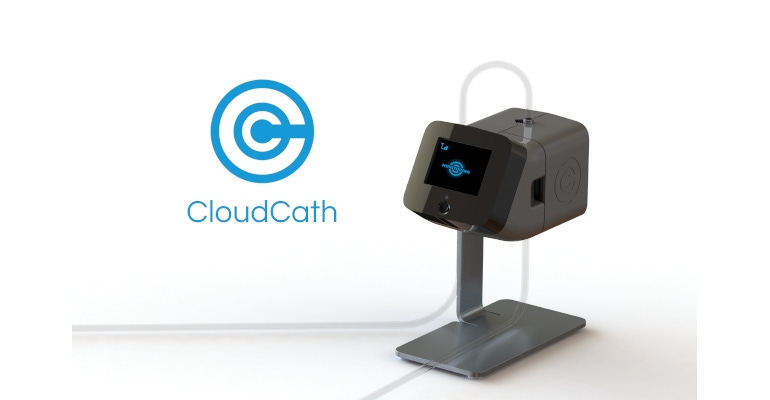CloudCath Wins FDA Nod for Connected Device that Brings Dialysis to the Home
A cloud-based digital connection enables communication of dialysis data with physicians.
March 30, 2022

Patients with end-stage renal disease (ESRD) who are awaiting transplant are burdened with high-cost care and spending hours in a dialysis center to maintain some functionality in their kidneys. Approval for the CloudCath System may help some patients complete dialysis at home under the watchful eye of clinicians monitoring the device remotely, and at a significantly reduced cost. The company’s first-of-its-kind at-home peritoneal dialysis (PD) system won FDA 510(k) approval and is expected to have a limited launch in 2022, followed by full commercial launch in 2023.
Dialysis care can be extremely expensive, averaging about $89,000 annually while at-home care can offer a significant cost savings at about $53,000 annually, according to the National Kidney Foundation’s American Journal of Kidney Diseases. At-home continuous monitoring may also help to avoid exacerbations, according to Aly Elbadry, chief executive officer of CloudCath.
Dialysis Monitoring to Avoid Clinical Deterioration
“The CloudCath device is designed to support the clinician/patient partnership for at-home PD therapy,” said Elbadry, adding, “Actually, the entire dialysis ecosystem has a current and urgent goal to maximize use of home modalities.” Additional monitoring steps are expected to avert health decline. With a cloud-based digital connection, the PD monitoring system continuously provides data that can tip a physician off to a brewing health issue.
“Promising early data with the CloudCath System shows patients and clinicians may be alerted to the need for evaluation days before the onset of symptoms, enabling patients to seek early medical intervention, diagnosis, and treatment before escalation to hospitalization, catheter removal or death,” he said.
Integrates with Current CCPD System
The ongoing and nonobtrusive nature of the device allows it to be added to ESRD care with minimal effort on the part of the patient or his/her family. Patients can continue to use their current continuous cyclic PD (CCPD) device with CloudCath. The monitoring system is designed to integrate with a patient’s existing device, according to Elbadry. “Patients simply connect the CloudCath sensor and drain set, similar to their current drain set extensions, to their at-home CCPD cycler,” he said.
“As the dialysate fluid is drained, the CloudCath sensor uses advanced digital, optical sensors to assess the turbidity of fluid,” Elbadry said. “Changes in fluid turbidity are detected by CloudCath’s proprietary cloud-based algorithm and notifications are sent to clinicians and patients to alert them to seek additional medical evaluation.”
CloudCath’s system has the potential to shift the PD monitoring landscape which in its current state is fragmented, with options ranging from paper-based tests, evaluating drainage lines, or waiting for symptoms. Instead, CloudCath’s device system looks for signs of infection or complication indicated by clouded dialysate fluid. When cloudy fluid is detected by the PD monitoring system, it is a trigger for the patient and physician to coordinate additional care.
New Standard of Dialysis Care with Monitoring
CloudCath envisions the monitoring system could be part of future standard of care in PD for ESRD patients. That could also extend to other settings. “Although focused on home PD, of course, the CloudCath System can also be used in healthcare settings like longterm care facilities and, in the rare case that a patient moves to a hospital and continues PD treatment, the CloudCath System could be used in a hospital setting,” said Elbadry.
About the Author(s)
You May Also Like
.png?width=300&auto=webp&quality=80&disable=upscale)

